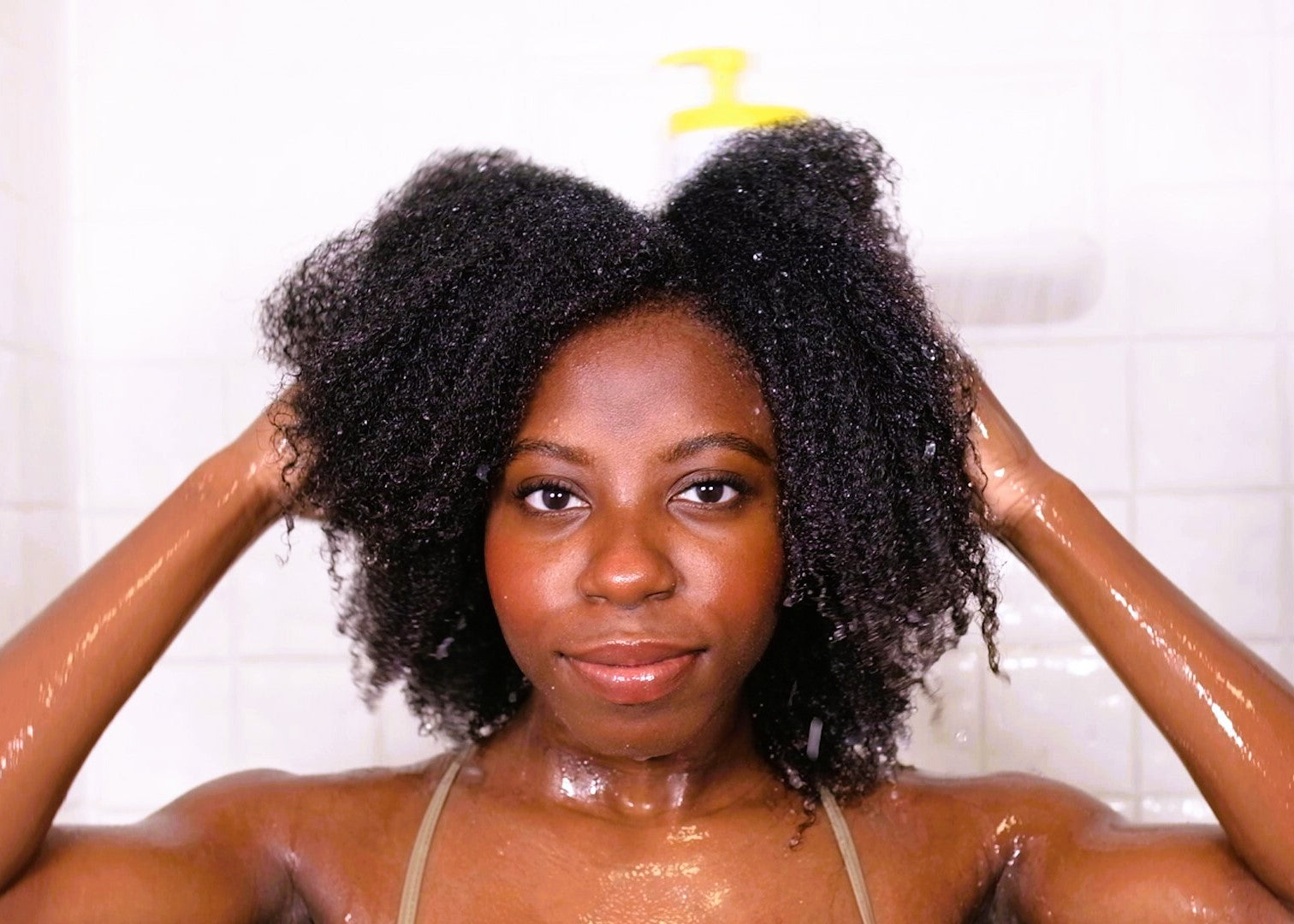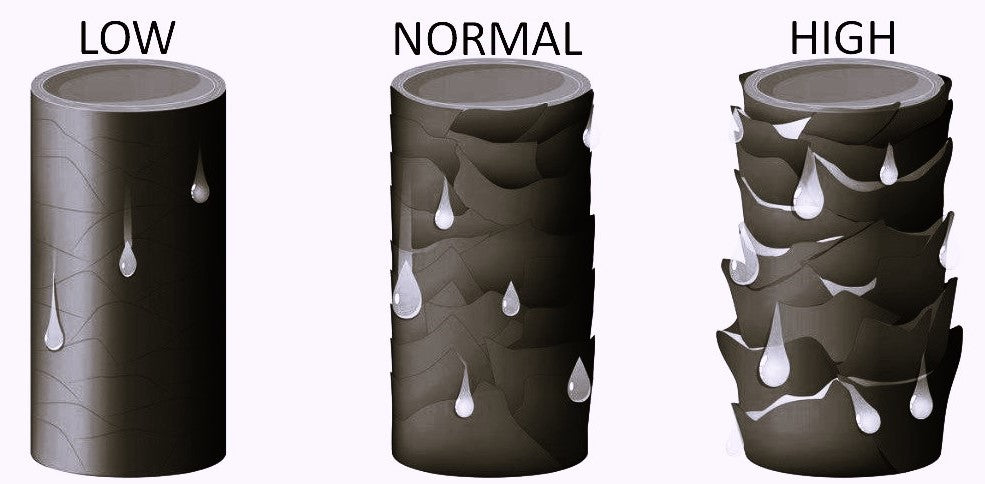Low Porosity Hair: Definition and Care Tips
Low porosity hair, characterized by a tightly sealed cuticle layer, poses unique challenges and merits a specialized approach to care. In this comprehensive guide, we delve into the intricacies of nurturing low porosity locks, unraveling the secrets that contribute to the overall health and vitality of your natural hair.
Low porosity hair is a type where the cuticles tightly lay flat, creating a barrier that makes it challenging for moisture to penetrate. This hair type is often prone to product buildup and may require specific strategies for effective care. Understanding the science behind low porosity is the key to unlocking its potential for stunning, healthy hair. Understanding the science behind low porosity is the key to unlocking its potential for stunning, healthy hair.
Why does it matter? Low porosity hair requires a tailored regimen to address its unique needs. Without proper care, it can become prone to dryness, breakage, and a lack of defined curls. By gaining a deep understanding of low porosity hair and adopting a specialized care routine, individuals can embrace their natural texture with confidence, unlocking the door to radiant and well-nourished locks.
Understanding Low Porosity Hair
Low Porosity Hair Traits: Low porosity hair, characterized by a tightly sealed cuticle layer, refers to a specific hair type where the individual hair strands exhibit minimal porosity or permeability. The tightly packed cuticles act as a natural barrier, making it challenging for moisture and external substances to penetrate the hair shaft. This distinctive feature often gives low porosity hair a glossy appearance and resistance to frizz, but it also presents unique care requirements.
Low Porosity Hair Challenges: Individuals with low porosity hair commonly encounter challenges related to moisture retention. Due to the compact cuticle structure, water and hair products may struggle to be absorbed, leading to issues like dryness and product buildup. Styling can also be a hurdle, as the hair may resist certain treatments or take longer to air-dry. Understanding and addressing these challenges is essential for maintaining the health and vibrancy of low porosity locks.
Need for a Personalized Care Routine: A one-size-fits-all approach to hair care may not be effective for those with low porosity hair. Specialized care addresses unique challenges, emphasizing methods and products to enhance moisture absorption, promote hydration, and ensure overall well-being. This targeted regimen unlocks the true potential and beauty of low porosity locks, fostering radiance and resilience.
Assessing Your Hair Porosity
Understanding your hair's porosity is crucial for tailoring an effective care routine, and there are accessible methods to determine it at home. One common approach is the "strand test," where the speed at which a clean, dry hair strand sinks in water indicates its porosity level. A floating strand suggests low porosity, while quick sinking indicates high porosity. Another method, the "feel test," involves assessing hair texture, with low porosity feeling smooth and resistant to moisture, and high porosity feeling rough or dry. Knowing your hair porosity matters as it directly impacts moisture absorption, product selection, and styling success. Tailoring your care routine based on porosity ensures addressing specific needs for optimal health and appearance. This knowledge empowers you to make informed decisions about products and techniques, unlocking the secrets to successful and personalized natural hair care.
Explore our comprehensive guide, "Hair Science 101: Let’s Talk Hair Porosity" for an in-depth look at the hair porosity test. Gain valuable insights into this essential aspect of hair care to better understand and care for your unique hair type.
The Science Behind Low Porosity Hair
Hair Cuticle Structure: The hair cuticle, the outermost layer of each hair strand, plays a crucial role in determining porosity. In low porosity hair, the cuticles are tightly packed and lie flat, forming a protective barrier. This compact arrangement not only contributes to the hair's smooth and shiny appearance but also restricts the passage of moisture and nutrients. Understanding this structural aspect is essential as it forms the basis for crafting a care routine that addresses the unique challenges associated with low porosity hair.

Moisture Absorption Challenges: Low porosity hair, due to its tightly sealed cuticles, faces a significant challenge when it comes to absorbing moisture. The closed cuticles create a barrier that impedes the entry of water and hydrating agents. As a result, individuals with low porosity hair may find it challenging to maintain optimal moisture levels, leading to dryness and potential brittleness. Recognizing this limitation is key to formulating strategies that enhance moisture absorption and retention, ensuring that the hair remains adequately hydrated and resilient.
Low Porosity |
Normal Porosity |
High Porosity |
| Sealed cuticles pose a moisturizing challenge, but once hydrated, they retain moisture | Loosely structured cuticles enable easy moisture absorption and retention | Wide-open cuticles easily absorb moisture but are prone to rapid moisture loss |
Challenges in Absorbing Styling Products: Styling low porosity hair requires a nuanced approach. The resistant cuticle structure can make it challenging for styling products to penetrate the hair shaft effectively. This resistance may lead to products sitting on the surface rather than being absorbed, affecting the overall styling outcome. Understanding the impact of low porosity on product absorption is crucial for selecting the right styling products and techniques that cater to the unique needs of this hair type. By choosing products that are specifically formulated for low porosity hair, individuals can achieve desired styles with greater ease and longevity.
Expert Tips for Tailored Care
Establishing a comprehensive routine tailored to the unique needs of low porosity curly hair is a fundamental step toward maintaining optimal health and vibrancy. The challenges posed by tightly sealed cuticles in low porosity hair require specialized attention to ensure that the hair receives the care it deserves.
1. CLEANSING: Choosing the Right Shampoos and Conditioners
Cleansing low porosity hair requires a thoughtful selection of shampoos and conditioners. Opt for sulfate-free shampoos that effectively cleanse without stripping away natural oils. These gentle cleansers help remove product buildup, ensuring a clean and refreshed scalp. Conditioners play a crucial role, providing moisture and aiding in detangling. Look for conditioners with lightweight formulations, enriched with hydrating ingredients to nourish low porosity locks without weighing them down.
2. MOISTURIZING: Techniques and Products for Optimal Hydration
Achieving and maintaining optimal hydration is a key aspect of caring for low porosity hair. Techniques such as the LOC (Liquid, Oil, Cream) or LCO (Liquid, Cream, Oil) method can enhance moisture retention. Integrate lightweight leave-in conditioners into your routine, along with water-based moisturizers. Natural oils like jojoba or grapeseed oil can be instrumental in sealing in moisture. Mastering the balance between moisture and sealing is essential for preventing dryness, promoting elasticity, and maintaining overall hair health.
3. STYLING: Tips for Achieving and Maintaining Styles with Low Porosity Hair
Styling low porosity hair requires specialized techniques to ensure lasting and vibrant results. Begin by applying styling products on damp hair, allowing for better absorption. Use a wide-tooth comb for even product distribution and to minimize potential damage during styling. Consider incorporating heat during styling to temporarily open the cuticles, facilitating product penetration. Opt for styles that require minimal manipulation to reduce the risk of breakage. These tips, combined with the right products, empower individuals to achieve and maintain stylish looks that showcase the natural beauty of low porosity locks.
NeoCurly's Low Porosity Hair Picks
- CLARIFY to eliminate product buildup: Low porosity hair tends to accumulate product buildup, making regular cleansing crucial. Incorporate a clarifying shampoo into your routine to effectively remove residue and maintain a clean, healthy scalp.
- DEEP CONDITION for quick moisture absorption: Enhance your hair's moisture levels by regularly using a deep conditioner. These treatments facilitate quick moisture absorption, providing long-lasting hydration to combat the dryness often associated with low porosity hair.
- OPT FOR LIGHTWEIGHT leave-in conditioners: Choose a lightweight leave-in conditioner with smaller molecules that easily penetrate the hair's midsection (medulla). This ensures thorough moisturization, addressing the unique needs of low porosity hair and promoting manageability.
- TEMPERATURE-CONTROLLED washing: Use warm water when washing your hair to open up the cuticles, allowing for effective cleansing. Finish with a cold water rinse to seal the cuticles and lock in moisture, promoting a healthy balance for your low porosity locks.
- HAIR OILS for instant moisture and shine: Integrate hair oils into your routine for instant moisture and shine without weighing down your hair. Look for natural ingredients like avocado oil or ginger, which not only provide moisture but also create a protective barrier against environmental damage.
- PROTECTIVE STYLES for growth and health: Experiment with protective styles such as locs, braids, or twists that work well with low porosity hair. These styles safeguard your natural strands, minimizing damage while promoting healthy growth.
- INCORPORATE HUMECTANTS for hydration: Incorporate humectants such as glycerin, hyaluronic acid, or honey into your hair care and styling regimen, like styling gels. These ingredients attract and retain moisture, ensuring the health, hydration, and resilience of your low porosity hair.
Low vs. High Porosity Differences
When comparing low porosity hair to high porosity, the key factor to consider is how much water the hair can absorb. Here's a concise guide:
High Porosity: Hair with high porosity has loosely arranged cuticles, allowing moisture to easily enter. However, this also means that moisture can escape just as easily, making it challenging for this porosity type to retain hydration.
Medium Porosity: Hair with medium or normal porosity falls between high and low porosity. The cuticles are looser than low porosity hair but not as loose as high porosity hair. This middle ground allows moisture to penetrate relatively easily, striking a balance where absorption occurs without rapid loss.
Embrace and Care for Low Porosity Hair
Now, it's time to embrace and nurture your low porosity locks. Remember, your unique hair texture is a beautiful part of your identity. Embrace the journey, and let the knowledge gained guide you towards healthier and more radiant natural hair.
We encourage you to share your experiences, insights, and questions. Join the conversation and connect with others in the natural hair community. Your journey is unique, and by sharing, you contribute to a supportive and inspiring environment. Don't hesitate to reach out, ask questions, and celebrate the beauty of your low porosity locks with the NeoCurly community. Together, we empower and uplift one another on the path to self-love and natural hair care excellence.
SOURCES:
- NeoCurly Oct 22, 2019: Determining Porosity: Techniques Tailored Care
- NeoCurly Sep 29, 2021: Lightweight Twist Outs for Low Porosity Type 4 Hair
 Skip to content
Skip to content




